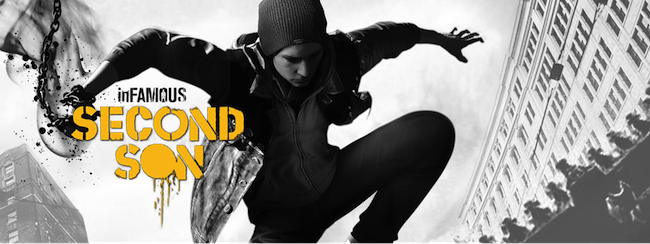
Since the PlayStation 4’s announcement, inFamous Second Son has been the carrot at the end of the proverbial PS4 stick. Second Son was to be the first big, new, first-party title to contend for Sony’s next-gen system. And so, after months of waiting, it’s finally here! I’m not the kind of person that could justify buying hardware for the sake of one exclusive title, but if I was, inFamous Second Son would likely be that game. I’m a huge fan of the inFamous franchise and their developer Sucker Punch, so I’d been waiting and hoping for an “inFamous 3” announcement for years. In truth, that’s not quite what I was given, but the Second Son announcement back during the PS4 unveiling event last year promised even more. A new city, a new hero, and most pertinently, new powers. I approached Second Son with the highest of expectations – inFamous 2 is my favourite game I’ve ever played – and while I was left with disappointments, Second Son is a decidedly excellent game and is undoubtedly fun.
Second Son’s new protagonist is the rapscallion graffiti artist, Delsin Rowe. When a truck transporting conduits (super powered humans) between prisons crashes, the convicts are free to escape into the Akomish Reservation Delsin calls home. Delsin and policeman brother Reggie soon find themselves in a scuffle with a smoke powered super-criminal. Amidst the conflict, Delsin accidentally inherits a gift from the escapee – his smoke powers. Soon thereafter, the Department of Unified Protection (DUP) is around to round up the bio-terrorists, along with its leader; Brooke Augustine. Augustine suspects Delsin’s new found abilities, and before leaving with the captured smoke bio-terrorist uses a power of her own; leaving the Akomish afflicted. Thanks to Delsin’s newly acquired conduit powers he quickly recovers, but the rest of his tribe are only deteriorating. With the only way to heal them being to use Augustine’s own power, Delsin devises a plan. The Rowe brothers head off to Seattle in chase of Augustine, hoping that Delsin can absorb her power as he did the smoke ability and, hopefully, save the Akomish.
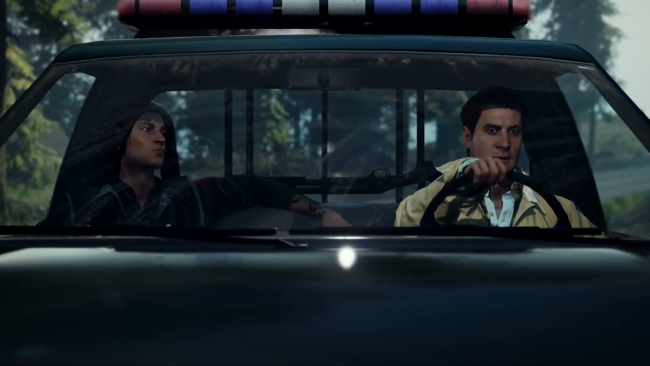
The story is simple and the motivation is generic, but what stands out about Second Son’s narrative component are the characters. The Rowe brothers are constructed so expertly, and their dialogue is impressively natural and believable. Delsin is one of the most likable protagonists I’ve ever come across, and his relationship with Reggie is a great platform to express each of their personalities. Because the tone is so much less serious than other games renowned for their writing, humour is arguably the greatest strength of Delsin’s character and Second Son’s writing. Delsin is seldom serious, and as a result, the moments in which he is, are particularly poignant. The carelessness displayed as he makes light of most situations is artfully contrasted to darker moments where he doesn’t. The disparity between his jocular personality and Reggie’s more serious disposition isn’t untypical, but provides an equilibrium for serious and humorous tones rather than trying to balance the two within one character – the reason I find plenty of games with ‘funny’ dialogue to be less believable than those without.
Other characters, unfortunately, aren’t given the same treatment. It’s not that they’re not great characters with interesting personalities, they’re just not given an opportunity to be fully appreciated. The less major characters each have very limited roles and aren’t very involved in the narrative. This works perfectly for some characters like the Akomish Betty, but for others like Fetch, a neon powered conduit, I felt they weren’t fleshed out nearly to the point they could have been, and where it seemed like they should have been. In fact, fetch is probably the best example of this. She becomes the sole focus of the story for three or four main missions before being overlooked just about entirely. From here, she’s only relevant for one or two short periods later in the game. I feel that Sucker Punch’s strength in storytelling is their character’s relationships, and it would have been great for these characters to have sustained relevance consistently after they were introduced and given more of a presence throughout.

If you weren’t already aware, inFamous is about using superhuman abilities. Whether you use them in acts of heroism to save the innocent, or to terrorize the weak and reap the benefits of your power is up to you. These powers have been hugely expanded in Second Son. Where Cole Macgrath (of inFamous and inFamous 2) had a proficiency in electricity powers and dabbled in flame and ice based abilities, Delsin’s power is the gift that keeps on giving – the ability to absorb powers from other conduits. This means that where Cole’s fire and ice abilities were auxiliary, each of Delsin’s powers is comprehensive and primary to the extent of Cole’s electric talents.
The multiple-power spin adds a diversity that wasn’t present in the first two series entries and gives players an allowance to choose their own play-style, not only through progression, but at any point in gameplay. Each power is fueled by an energy source, and as powers are used the corresponding energy is drained. Luckily each power is easily replenished by absorbing some of its titular elements. Smoke can be absorbed from damaged vehicles or rooftop chimneys, and neon straight from signs scattered throughout Seattle. This means that any power can be absorbed during or outside of combat, and using energy sources effectively can become inherently strategic.
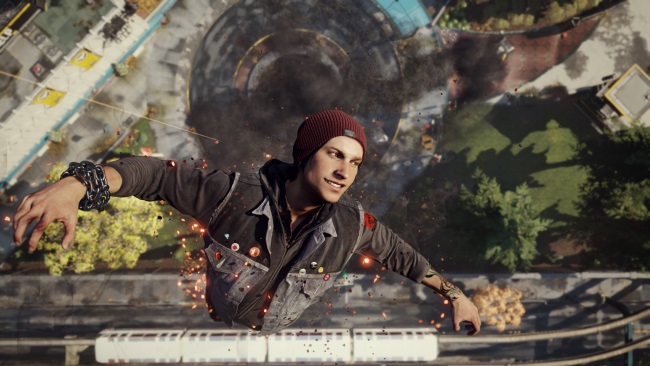
Sucker Punch have been careful not to spoil how many powers there are in the game or what they all are, and for your sake I won’t mention that here either (but if you really don’t mind it being spoiled, you could always google it). The powers Sucker Punch have discussed though, are smoke and neon. Both of these are interesting, original, perfectly fitting in the inFamous universe, and most importantly, so much fun to use. Smoke powers allow Delsin to shoot smoking ash from his hands as a projectile, transform his body into smoke to pass through fences or air vents and create a cloud of smoke causing enemies to cough and drop their defence. Neon allows Delsin to run at extreme speeds, sprint straight up walls, and shoot accurate laser projectiles. The differences between these two move sets are diverse enough to feel different and encourage application of each in different situations, while staying similar enough that the core gameplay and control schemes remain consistent throughout. It’s easy to find preferences for completing different tasks, but it’s also easy to switch back and forth in the midst of battle.
Each power was cleverly designed as a compliment to the others and delicately balanced to allow players to play how they see fit without any distinct advantage or disadvantage for any power. No power set feels better or worse than the others, but still, unmistakably different. As much as I love smoke and neon powers, though, I didn’t care quite so much for some of the others. One of the other ability sets in particular seemed strangely specific and incongruous with the pseudo-elemental nature of all other powers shown in the inFamous narrative. The power itself seemed interesting and fit well theoretically, but the move-set Delsin acquires whilst using it was irrationally specialised, and compromised the solidarity of the inFamous universe – at least in my opinion. Mechanically it was great, and comparable to each other power in terms of gameplay. In consideration of consistency with the established fiction, though, it was one of my biggest, and very few, disappointments with the design of the game.

Morality choices have always been relevant to the series – “Being a Hero is Optional” was the tagline of the first InFamous game. The karma system is back in full effect in Second Son, and in certain ways as good as ever, but also disappointingly shallow in others. The main factor in whether you head towards the path of a ‘True Hero’ or become ‘Infamous’ are the choices you’ll be forced to make through the narrative. This produced a major disappointment in the game for me; each of these choices feels inconsequential. They might effect a couple of lines of dialogue or alter the context of the next mission, but no choice you make sticks with you throughout the story. You’ll also come across randomly occurring events that can boost your karma. Stopping a drug deal will earn you good karma, for example, while striking down anti-conduit protestors will send you down the road to infamy. Most expanded, however, is the possibility to earn karma from the way you play moment-to-moment. Subduing your opponent upon defeat or taking them out them will earn positive and negative karma respectively.
As you level up through each karma level, you’ll unlock new upgrades and abilities to purchase. Though these upgrades can be useful, and a handful of them are quite interesting, the variance between which skills you’ll unlock based on your morality is underwhelming, especially when compared to inFamous 2. Overall, mortality impacts the game in fairly trivial ways and playing through a second time and making different choices doesn’t change much – or really anything noteworthy. I can imagine Sucker Punch would feel compelled to make mostly similar endings to each narrative for the sake of continuity in a potential sequel, but I really felt that being a good guy should have been a much more different experience to being a bad guy than it was – even if it led to the same conclusion.

InFamous Second Son is a game filled with lots of things to do, including a main questline, side missions, and a lot of optional extras. Unfortunately, however, a lot of these devolve into monotony. Story missions frequently consist of chasing someone over rooftops until they finally give in, or just fighting groups of enemies in different areas around Seattle. These parts of the game are still fun, but as a player, I was always aware I was doing something I’d done before. An interesting addition to the inFamous formula is a type of mission where Delsin investigates a crime scene to try and hunt down a conduit to gain their powers. There are a few of these missions through the game, and it’s a shame, in my opinion, that there weren’t more missions that strayed from the path in this way.
Side missions, such as collecting blast shards and reclaiming areas from the DUP’s control, provide a fun way to explore Delsin’s powers when not engaged in a set mission, and also supply a means of progression outside of the story missions. However, in saying that, many side missions revolve around chasing down secret agents, discovering hidden camera’s locations, and spray painting some very impressively designed tags around Seattle. At first, these activities can be fun, but it’s hard to ignore the lack of variety, and as such, repetition can sometimes hinder enjoyment. What would have been better, in my opinion, is more story content. Second Son isn’t a short game by any means, but I definitely felt that it ended faster than I expected, and definitely faster than I wanted.
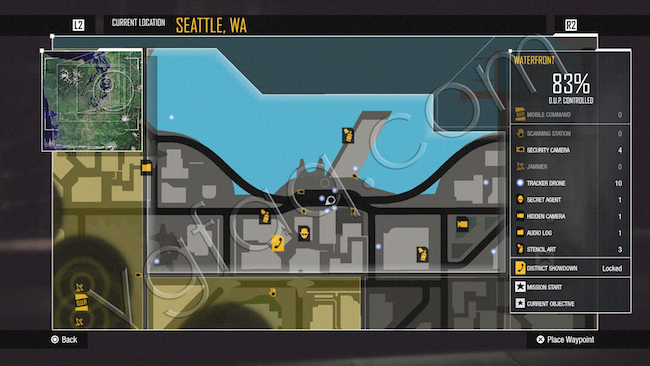
Scaling buildings the old fashion way can be a bit rough around the edges, but this is only because Delsin has so many ways to climb more efficiently and buildings are constructed realistically rather than to be traversable. Delsin sometimes feels a bit “floaty”, but is easily controlled, and destroying environmental objects is empowering and satisfying. Though you’ll occasionally clip through a wall or be sent into the air for no reason, everything you can do as Delsin is awesomely entertaining, and not a single minute is even slightly uninteresting. The game is much more challenging than its predecessors too but in a completely fair and rewarding way. It’s not a particularly difficult game, but a lot more thought and attention is needed than in either of the first two games. Perhaps my favourite thing about Second Son, though, is that it remains true to the inFamous franchise whilst being entirely new. It takes nothing away from inFamous 2 by outdoing or competing with it, but instead takes its own shape along side it.
The characters, Seattle, and all of Delsin’s powers are superbly presented. In fact, I found myself taking enormous amounts of screenshots with the DualShock 4’s Share button, which was surprisingly enjoyable. Whether a believably modeled facial expression, a beautiful cityscape, or just a clever piece of Delsin’s graffiti, there’s always something interesting to look at. The visual presentation is far from perfect, though; with several clipping character models, shadows becoming more detailed when aiming, and noticeably man-made faces and expressions on certain character models. Having said that, it’s so easily looked passed when its strengths are so impressive. It’s not consistently to the visual quality of even certain PS3 games, but at its best inFamous Second Son is one of the most beautiful games I’ve ever seen. Light reflects realistically off water and shining skyscraper windows, flames stand out crisply in the streets, destructible objects crumble and shatter in a way as real as they could be, and the city lights during the night seem to go on forever with no draw distance limits in sight. Seattle is truly gorgeous.
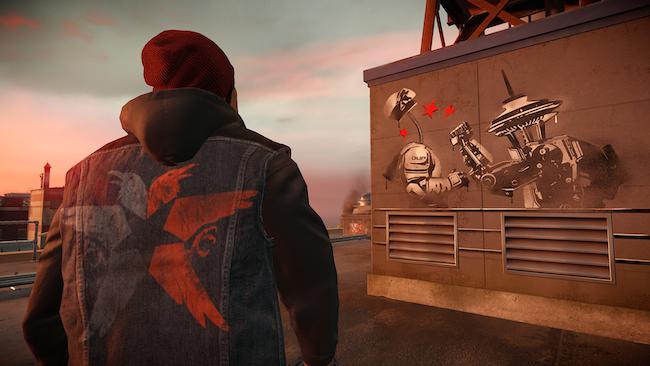
More impressive, though, are the actors’ performances. Troy Baker as Delsin and Travis Willingham as Reggie in particular are spectacular, and I can honestly say that this my favourite voice work and motion capture in any video game to date. If someone has to take Nolan North’s former role as every single video game character, Troy’s the man to do it, and he’s halfway there. His role as Delsin, especially when compared to his parts as Joel in The Last of Us, and more serious characters prove his abilities as a truly talented actor. Travis is equally commendable as Reggie, and the banter the two have back and forth is one of the greatest strengths of the game, and something that makes it stand out as a modern and mature piece of entertainment. Less important characters are acted impressively too (Betty in particular is very believably performed), but are given much less material to work with.
The soundtrack for InFamous Second Son is another point on the long list of things I really appreciate about the game. The industrial, rock/orchestral style is familiar from previous entries in the series, but this time round, the song writing is much stronger. There are plenty of songs that I was excited to hear time and time again, and I even found myself humming certain melodies after playing. Every track is so unbelievably suited to the narrative scene it’s paired with, and to Delsin’s character in particular. The music consistently remains interesting without intruding on the rest of the sound design, which is also on my aforementioned list. Each power’s attacks and means of mobility have sound effects that are fittingly impactful, swift, or sharp. Playing with headphones on is a treat!
 Interesting narrative and likable characters
Interesting narrative and likable characters Gameplay remains consistently entertaining
Gameplay remains consistently entertaining Range of powers provides gameplay variety
Range of powers provides gameplay variety Superbly acted and presented throughout
Superbly acted and presented throughout A sequel that stands strong on its own merit
A sequel that stands strong on its own merit
 Some characters deserved more focus
Some characters deserved more focus Side missions become repetitive
Side missions become repetitive Morality makes little difference
Morality makes little difference
inFamous Second Son is one of the most enjoyable games I’ve ever played. If you own a PS4, I strongly recommend playing it. If you’ve been waiting for a great game to pick up a PS4, I’d say you’ve waited long enough. Though nothing about it truly stands out as “next-gen”, in my eyes, everything about it equates to a truly incredible game. It is not without shortcomings, but when compared to everything it achieves, it is very easy to look past them. Fantastic super-powered gameplay, impressive visuals and skilfully constructed characters make inFamous Second Son my favourite game on the PS4 by far, and I’m sure I’ll be comparing releases to its quality for years to come.











